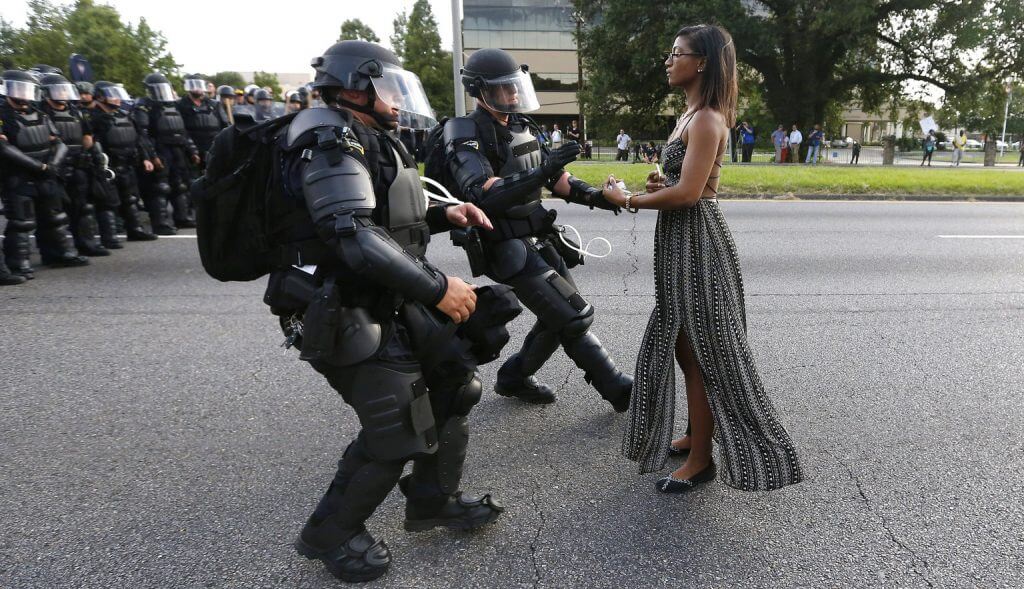The fact that brands use current events in their communication has naturally increased since the internet has become part of everyday life and has thus increased both the speed and the possibilities. Taking up political or socially relevant topics and moods is also nothing new, and controversy is often part of the marketing calculation.
In the 1980s, Benetton and Oliviero Toscani set up a beacon with the United Colors of Benetton campaign, the light of which still shines today. At the time, company boss Luciano Benetton was of the opinion that if he had to advertise, then he wanted to make good use of his presence and draw the world's attention to the burning issues of the day. My opinion was already differentiated at that time, because the world was already sufficiently informed about war, racial problems, AIDS and poverty even without Benetton advertising, and the - probably unintentional - cynicism of the campaign outshone the actually brilliant communication idea for me.

With its colours and patterns, Benetton brought a new cheerfulness to the fashion world, which was still very monotonous at that time - even in Italy. I thought the renaming of the Benetton brand to United Colors of Benetton and then staging the United idea as a brand mission was excellently thought out and still consider it courageous and exemplary today. Little by little, the advertising campaign expanded into a brand experience - Benetton launched the magazine Colors, opened the media creative lab Fabrica and started various projects with social relevance, from culture to diversity and currently runs a women empowerment programme. In this way, Benetton gained credibility because initiatives were set and not just topics were put up on posters. In the meantime, the company has experienced all kinds of economic troubles and its communication is stumbling around somewhat erratically. Nevertheless, the strategy of intertwining brand and mission is still the gold standard.
How quickly and powerfully it backfires when substance and intuition are lacking and spectacular tastelessness is added to the mix is what Pepsi is experiencing these days with a film that stages Kendall Jenner, a member of the much-maligned white establishment in the USA, as a Coke-bringing angel of peace at a demonstration.
Apart from the fact that this idea is a totally imposed advertising brainwave that can only be screwed into the brand positioning Live for Now with a spasm and is so outrageously stupid that your stomach won't stop spinning: there are topics that you simply leave out. Full stop. Anyone who works in a communications profession and doesn't feel that way should look for another line of work. And because that is not enough, the iconic image of the demonstration in Baton Rouge on the occasion of the shooting of the Afro-American Alton Sterling by a police officer is also instrumentalised.
And behind that, there is nothing far and wide, except the sale of Pepsi. One recognises the intention and is disgruntled. Pepsi deserved the top-class shitstorm, in which a considerable crowd of Hollywood stars also took part. The commercial has since been withdrawn and an apology issued. What remains is a hefty damage to the brand and a more than nasty aftertaste. It is remarkable that neither Pepsi, its in-house agency nor Team Kendall had anyone responsible to prevent the drama with a courageous "Let's go!
Diesel would also do well to give substance to his idea "Make Love Not Walls." to give substance to its idea. The idea of tearing down walls fits in very well with the subversive spirit of the brand, since Diesel founder Renzo Rosso is considered the inventor of distressed jeans, i.e. destroyed trousers that cost more than the whole pair. In our time, in which the divisive seems so much more important than the common, the brand could really commit to a lasting counter-movement and not just have an awesome campaign produced by David LaChapelle. That would do more good for everyone, most of all for the brand.
The same applies to the German railwayswhich wants to tell relevant railway stories in a socially topical context and recently published a first spot from an announced series, namely about tolerance.
A company like Deutsche Bahn in particular should not leave it at films, because of its social responsibility and the benefits that could be derived for a strong brand, since trains and stations are places where people meet. Connecting people is the core business. Deutsche Bahn would have every chance of setting up a positive movement. Maybe it will happen. If not: too bad ...
If the Pepsi breakdown was good for anything, it was perhaps for learning something from it for one's own work and for seeing the validity of six basic rules for purpose-driven brand stories confirmed:
- Find the Purpose from the genetic (≠ generic!) values of the brand.
- The theme must activate an essential core value of the brand, something worth fighting for.
- The brand purpose must be an authentic concern for the company. Would you also stand up for it without it bringing advertising benefits to your brand?
- A brand purpose must contribute to the benefit of the audience.
- The audience must be activated and not remain passive observers. In this way, they become an integral part of the brand purpose.
- The message must be T-shirt-compatible, i.e. it must be possible to communicate both the message and the wording in a concentrated way.

